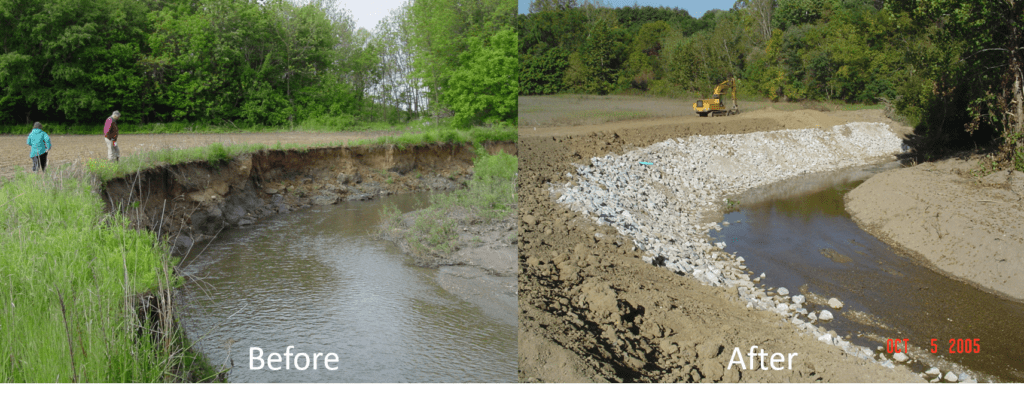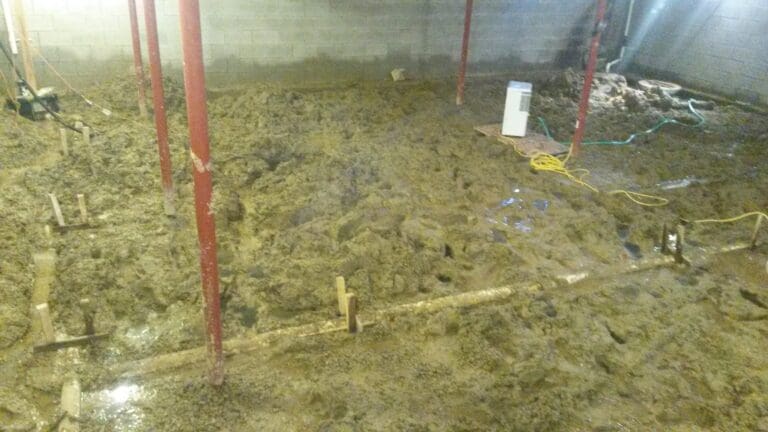We often receive calls regarding the best practices of water drainage. (“Water” is in our name, after all!)
Below are water drainage “rules of thumb” that we at Fairfield Soil and Water Conservation District often recommend to folks. Some information is found in more detail in the resource sections of our website at www.fairfieldswcd.org.
Streambanks and Ditches
DO:
- Seek advice prior to placing hard materials (stone, etc.) in streams and determine if permits are required for your planned work.
- Maintain vegetation; turf-type fescue is recommended.
- Use a rigid material such as PVC for tile outlets. Single-wall tile can droop, catching passing debris and ultimately causing stream bank erosion.
- Locate rock pads below tile outlets to prevent bank erosion from falling water.
- Remove fallen trees quickly to avoid back-ups and logjams. Logjams cause erosion when water makes its way around them, cutting into streambanks.
- Add rock in the toe of the streambank to secure it, as this is where water velocities erode the soil causing collapse of the area above it.
Learn more about preventing erosion and stabilizing your streambank in our Stream Management Guide.
DON’T:
- Don’t dump concrete over the bank. Concrete floats and can cause issues downstream.
- Don’t spray herbicides creating bare soil. This will cause erosion issues quickly.

Water Patterns and Waterways
DO:
- Maintain vegetative cover where possible; turf-type fescue is recommended.
- Repair any tile blowholes as soon as possible to prevent additional erosion. To learn more about tile, refer to our article, What is Field Tile?
- Seed and mulch any bare areas that develop.
DON’T:
- Don’t pollute! Do not throw grass clippings or yard waste into any water course or pattern. Keep any compost/manure away that could leach into water. Learn more about keeping yard waste out of drainage patterns in Engulfed in Leaves? 3 Options for Dealing with your Trees’ Autumn Offerings!
- Don’t build structures (house, barn, shed, etc.) in or too close to a water pattern.
- Don’t drive across a waterway when it is too wet; ruts could prevent proper flow.
Watch a grassed waterway in action! The timber drop structure at the bottom of the waterway helps to control flow and prevent erosion.
Residential Drainage
DO:
- Work with your neighbors. In most cases, drainage issues are a civil matter that must be resolved in court. Read more about Ohio Drainage Laws.
- If possible, talk to previous landowners about the location of drainage tiles, including those that connect to gutters/downspouts, sump pumps, leach fields, perimeter/foundation drains, etc.
- Add animal guards to tile outlets. Small critters can crawl into tiles and cause a blockage.
- Checking historical aerial imagery may assist in identifying existing tiles. Download Google Earth
Pro (free version) and enter the address or intersection in the search window at the top left. Clicking on the clock icon in the toolbar at the top will allow you to scroll through several years of
aerials through the timeline (usually 1994-2017, depending on location) . Contact our office for older aerials, dating back to 1938.
- Don’t plant trees near tile, unless the tile is non-perforated. Tree roots searching for water will quickly plug tile.
- Don’t plant trees under power lines.

Aerials can be very revealing! The aerial on the left clearly shows systematic tile in a field. The aerial on the right was taken a few years later after the western portion of the property had been sold as a house lot.
As you can see, tile lines were cut when the house was built. Unfortunately, the tiles weren’t appropriately rerouted during construction. This resulted in a very wet basement (see below) and had to be addressed.

